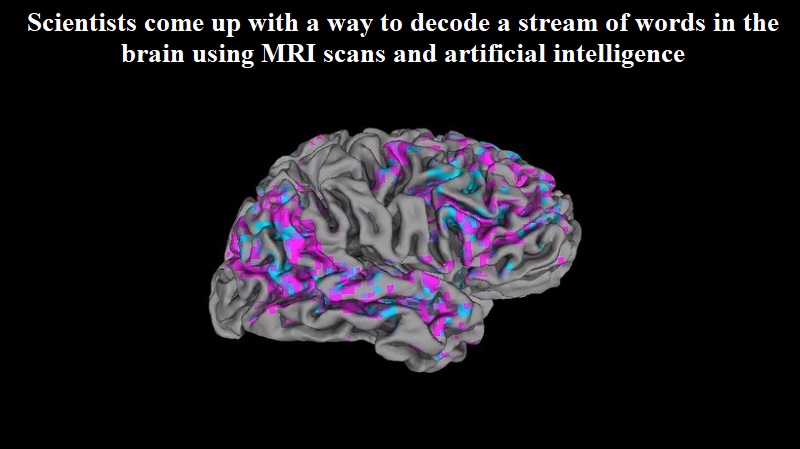
The question of whether mind reading is possible has long been debated, but no definitive answer has been found. Despite the fact that psychologists claim to have some understanding of mental processes, brain functions, and behavior, their ability to accurately interpret what others are saying is not perfect.
However, a recent study published in the journal Nature Neuroscience claims to have found a way to decode a stream of words in the brain using MRI scans and artificial intelligence.
The study, titled “Semantic reconstruction of continuous language from non-invasive brain recordings,” suggests that while the system won’t replicate every word, it can reconstruct the essence of what a person hears or imagines.
Alexander Huth, an assistant professor of neuroscience and computer science at the University of Texas at Austin and a co-author of the study, said that the system is “getting at the ideas behind the words, the semantics, the meaning.”
It is important to note that the system is only effective when the participant is actively cooperating with the scientists, so it is not capable of reading minds. According to the study, the researchers introduced a non-invasive decoder that can reconstruct continuous language from cortical semantic representations recorded using functional MRI.
The decoder can generate intelligible word sequences from novel brain recordings that recover the meaning of perceived speech, imagined speech, and even silent videos. The researchers also tested the decoder across the cortex and found that continuous language can be separately decoded from multiple regions.
The study’s authors said that the decoder can be applied to a range of tasks, and that successful decoding requires subject cooperation, as brain-computer interfaces should respect mental privacy. The researchers trained decoders for three subjects and evaluated each subject’s decoder on separate, single-trial brain responses that were recorded while the subject listened to novel test stories that were not used for model training.
They found that the decoder represents language using semantic features, rather than motor or auditory features, so its predictions should capture the meaning of the stimuli.
The study’s results indicate that the decoded word sequences captured not only the meaning of the stimuli, but often even exact words and phrases, demonstrating that fine-grained semantic information can be recovered. In conclusion, the study demonstrates the viability of non-invasive language brain-computer interfaces, but more research is needed to determine the full potential of this technology.

Post Your Comments